Motorcycles Technology
CBR1000RR - History : Episode00
Challenging the supremacy of engine power
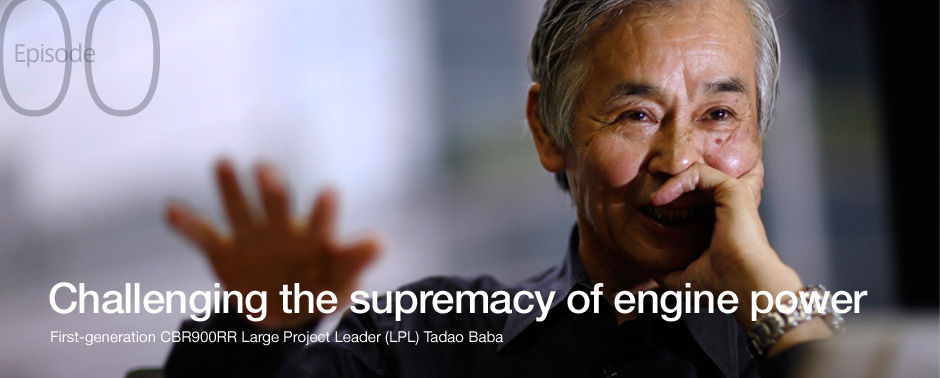
Whether a manufacturer was staying within the 750cc permitted by the racing regulations of the time or trying to beat a rival by a few cc without regard for an upper displacement limit, the goal was to squeeze as much output from the engine as possible. It was the early 1990s, and such was the situation in the new super sport bike market. For many riders in this new era, racing fandom came together with dreams of owning a flagship motorcycle. Responding to this desire, Honda launched the CBR900RR, whose heart was a new inline 4-cylinder 893cc engine delivering maximum output of 125 hp.
While exceeding the racing regulation limit of 750cc, the CBR900RR was lower in displacement than rival flagships, which typically boasted over 1,000cc. Yet, despite not offering the most raw power, upon launch the CBR900RR was greeted with happy surprise by enthusiasts around the world. Its amazingly lightweight and compact design overturned the conventional wisdom of what was possible in motorcycle design.

First-generation 1992 CBR900RR
The starting point: defeating the RVF750
Former Honda Racing Corporation (HRC) works rider Hikaru Miyagi: I clearly remember thinking at the time that you’d done something really bold. First, the 900cc displacement figure was unusual, since back then high-displacement full-cowl super sport models were either 750cc-class racer replicas or 1,000cc-class sport touring bikes. Instead of complying with conventional wisdom and offering the body size of a 1,000cc-class bike, the CBR900RR had the wheelbase of a 600cc-class bike, everything in it was designed so compactly that you could see right through the frame, and its cowling was amazingly thin. When it launched, a completely new category of motorcycle was born.

RVF750
First-generation CBR900RR Large Project Leader (LPL) Tadao Baba: Indeed, lightweight, compact design was the point of departure for this bike, and its reason for existence. When advanced development began, our goal was nothing less than creating a motorcycle capable of beating the RVF750 HRC works racer in the Suzuka 8 Hours Endurance Road Race.
Miyagi: So you actually began development with 750cc in mind. But it’s amazing that you selected a Honda bike as your benchmark and made defeating it the goal of development!
Baba: At the time, riders had a pretty hard time handling the full-cowl sport bikes that were selling well in the market. Both the 750cc-class racer replicas and the 1,000cc-class flagships had been evolving year after year into more powerful bikes, but their bodies had also become proportionately heavier. Of course, there was enjoyment to be found in mastering such bikes, but the number of people who could do so was not very large.
Miyagi: To riders, big power and a large displacement offer a great deal of value. Yet it got to the point where riding those bikes took a lot of strength and made riders tired, and controlling them was difficult. As you said, only a handful of riders could truly master them. Thus, you had it in mind to change this trend.
Baba: That’s right. For that reason, we were aiming to create a bike that was the most lightweight and compact in its class. It was a given that it had to be better than our competitors’ 750cc bikes, but if it could also beat Honda’s own RVF750, then we’d have an entirely new type of sport bike that anyone could enjoy riding. And so we began development of our new super sport bike, which leveraged the lightweight and compact inline 4-cylinder engine that we’d been working on for a long time under the radar. We came up with the phrase total control to establish the image of the model, and based on this we developed every function and performance characteristic. Also, since there was no English phrase that perfectly matched the Japanese, we discussed options at length and eventually selected total control as the translation.
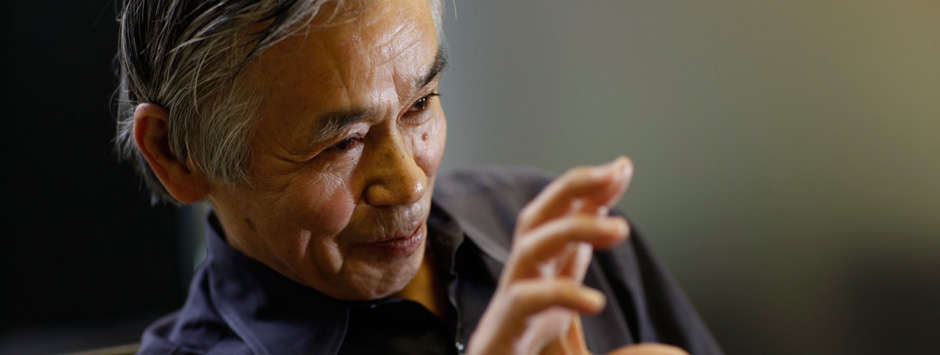
The birth of a category-breaking, completely new type of sport bike
The most lightweight and compact in its class. Capable of defeating the RVF750 HRC works racer in the Suzuka 8 Hours Endurance Road Race. Offering every rider total control. With these goals, advanced development began for the motorcycle that would become the CBR900RR. Now the team’s job was to clarify further these fundamentals and realize them in physical form.
Baba: Our basic thought was this: If we were going to create something new, instead of developing a motorcycle that would compete directly with other bikes in the Honda lineup, why not go for something that transcended the preexisting categories of 750cc racer replica and 1,000cc flagship sport bike? Fortunately, we had the dimensions, center of gravity position and all the other packaging details we required for a 750cc bike—exactly what we needed to offer all riders total control. Our challenge then was to create a bike based on this packaging that offered riders total control while transcending preexisting categories.
Miyagi: So you didn’t have the 900cc figure in mind from the start. Still, if you’re crossing that 750cc limit, there’s no upper boundary to displacement. That’s why other super sport bikes had become powerful but heavy.

Baba: First of all, our target environment was the autobahn in Germany. We researched the level of speed that the rider of a flagship motorcycle wanted to achieve. As you know, there are many sections of the autobahn system that have no speed limit. Speed demons aside, people travel at an average speed of about 160 km/h. For this reason, our goal was to develop a bike that could go from 0 to 160 km/h in the same time as a 1,000cc-class bike. Achieving this objective depended on the power-weight ratio, so we needed to figure out the right horsepower and displacement figures. Of course, we would be sticking with the 750cc packaging we had. Our subsequent research told us that a displacement of 893cc was what we needed.
Miyagi: But doing so was the exact opposite of the trend at the time, wasn’t it? The birth pangs, so to speak, must have been substantial.
Baba: Yes, this was the era of engine power supremacism. No. 1 in engine power. No. 1 in top speed. No. 1 in displacement. These things were easy to sell. Since you can’t tell how a bike rides by these numbers, it took a while to convince people we were taking the right approach. But when we invited riders associated with our affiliates in Europe to Japan to try out our motorcycle, it was very clear that they were enjoying themselves. From there, we were able to realize a finished product. In Europe, they didn’t want to promote the “900” figure very much, so the motorcycle went on sale with the name “FireBlade.”
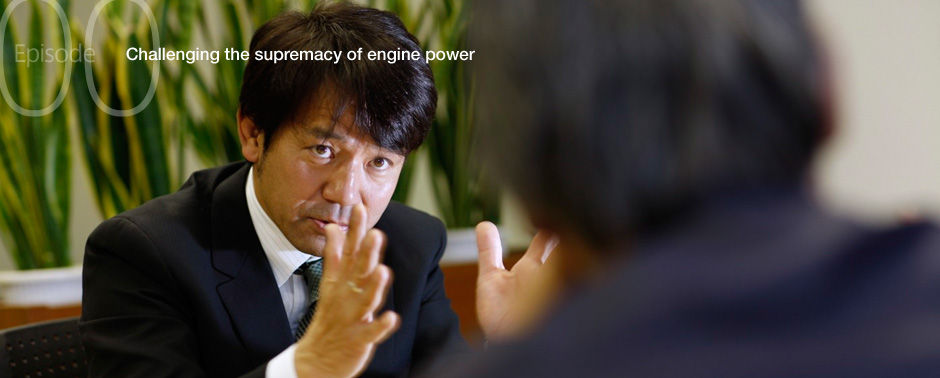
A bike nurtured by users
Once the CBR900RR was launched, it quickly allayed the worries of the development team by being warmly welcomed by riders around the world, who were now able to enjoy truly sporty riding to the fullest. As a result, the idea that a bike is defined by its displacement figure fell by the wayside, and even in Europe, where the 900cc figure was at first avoided, the name “CBR900RR” eventually found favor.
The original CBR900RR was not created as a racer replica. It did not comply with the regulations of TT F1 World Championship or World Superbike Championship, and neither was it designed to log maximum speed records on the circuit. Nevertheless, riders did in fact use the bike in racing, and the motorcycle known as the FireBlade went on to log one victory after another across the globe.

Miyagi: The CBR900RR came to us from a very different path than the RC30, but it would be safe to say that it’s not a racer replica?
Baba: That’s right, it’s not a racer replica.
Miyagi: I rode the CBR900RR when I was member of the Erion Racing team in the USA. This was in the class called “open class.” It was incredibly fast. In fact, it was so fast I was able to pass Superbike works machine riders on the banked curves of the Daytona International Speedway. How do you feel about the fact that the CBR900 was ridden in races around the world? Is it still safe to say it wasn’t a racer replica?
Baba: Correct. We designed the bike for riders to enjoy sporty riding on public roads. The CBR900RR was successful in racing because users got tuners involved, and together they nurtured it into a racing machine. Instead of determining how people could use the bike, we on the development team gave them a bike that encouraged their creativity. There are people who have used the CBR900RR for touring, and there are those who have enjoyed riding it on winding roads. Similarly, there have of course been people who have used it in racing.
Miyagi: Users nurtured the CBR900RR—I like the way you put that. That reminds me of one other thing the CBR series changed: the development team became visible to users. You yourself made a point of meeting with CBR owners and communicating with them, isn’t that right?
Baba: Yes, that’s right. I wanted to meet with users in person and get their views on what constituted the joy of total control. I visited Europe and the US and spoke frankly and openly with all kinds of users riding bikes from every manufacturer. When, for example, a rider asked me how to make his Yamaha R1 easier to ride, I was happy to provided an answer. Of course, I also told him that he ought to switch to a CBR. [Laughs.] But it was through conversations like this that I really got an understanding of what was important to riders.
Reaching the whole world—the CBR concept
Riders now had a super sport bike that felt as easy to control as their own arms and legs. Overturning the view of super sport bikes as fast but hard to handle, the CBR900RR brought the joy of total control to riders around the world.
Miyagi: What you accomplished with the CBR900RR was literally to change the fundamental concept of the super sport bike. I believe there are a great many riders who, simply by trying out the CBR900RR, encountered a completely new way of enjoying motorcycles.
Baba: Our goal with this bike was to have people ride, get their bodies into it and think, “That was really a good sweat!”—that kind of feeling. I’m not talking about a cold sweat and getting exhausted. Rather, I’m talking about a rider arriving home after a good tour, taking off his riding gear, taking a nice shower, pouring himself a drink, sitting on the sofa and thinking, “Today was a really fulfilling day.” It’s the kind of fatigue where a rider looks back on the day and just feels good. This is the vision that lay behind our concept of total control.

Miyagi: I see. It was a feeling that riders just couldn’t get from the big and heavy super sport bikes that had preceded the CBR900RR.
Baba: This is somewhat of a tangent, but the Japanese word hiyaase is translated as “cold sweat” in English. It’s a literal translation of the Japanese, and it translates literally in just about every language. Yet there isn’t a literal translation for “good sweat” as we call it in Japanese in English, German, Italian or French. Even so, I think the CBR900RR went beyond such words and directly communicated exactly what we wanted users to experience. That is, the feeling of enjoying sporty riding and having a good sweat.
CBR1000RR - History
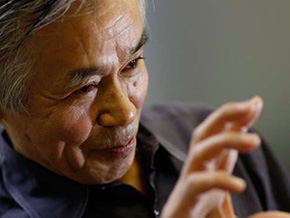
Episode 00 : Challenging the supremacy of engine power
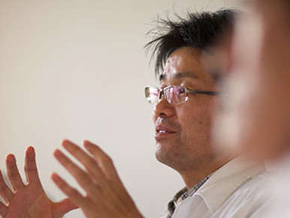
Episode 01 : Lightweight design that transcends the spec sheet
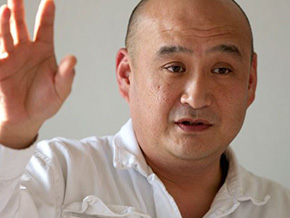
Episode 02 : Racing technologies prove their value on the street

Episode 03 : Still shining bright―the origins of the CBR series
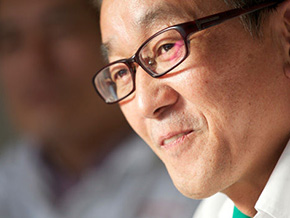
Episode 04 : Beyond ease of handling lies the joy of control